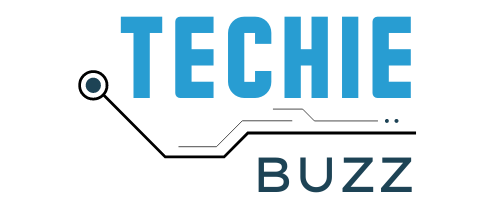In today’s digital era, the workplace landscape has undergone a seismic shift. Technology, once a mere tool, is now deeply embedded in every aspect of employment, from recruitment to day-to-day operations. This profound integration has redefined workplace relationships and processes, introducing a new set of dynamics.
One of the most pressing challenges emerging from this digital transformation is the issue of unfair dismissal claims. As we delve deeper into this intricate topic, we’ll uncover the multifaceted ways in which technology, despite its numerous advantages, has added layers of complexity to employment disputes, necessitating a fresh perspective on traditional practices.
Digital Footprints and Evidence

In our interconnected world, every online action leaves a digital footprint. These traces, from social media interactions to email exchanges, can become pivotal evidence in unfair dismissal claims. A seemingly innocuous tweet or a Facebook post from years past can suddenly resurface, casting a shadow over an individual’s professional life. For employers, this digital trail offers a rich repository of evidence.
However, it’s a double-edged sword. While it provides insights, it also demands a discerning approach to differentiate between pertinent information and personal boundaries. Employees, conversely, must tread the digital landscape with heightened awareness, recognizing its lasting and often indelible nature.
Electronic Communication in the Workplace
The digital age has ushered in a new era of communication. Traditional face-to-face conversations are increasingly supplemented, if not replaced, by electronic interactions. Emails, instant messaging, and collaborative platforms are now the lifeblood of professional communication. Yet, the convenience of digital dialogue comes with its set of challenges.
Misunderstandings, inappropriate remarks, or even a simple error in addressing an email can spark disputes, with some escalating to the point of dismissal claims and bring out a need for an unfair dismissal solicitor. Given these nuances, it becomes paramount for organizations to draft and enforce clear guidelines, ensuring that the sanctity of professional decorum remains uncompromised in the digital realm.
Remote Work and Surveillance

The advent of remote work, accelerated by global events, has posed a novel challenge for employers: How to effectively monitor a dispersed workforce without overstepping privacy boundaries? The market is flooded with tools promising efficient remote surveillance and tracking. However, the fine line separating constructive supervision from privacy invasion is easily blurred.
While surveillance might be rationalized for productivity enhancement or security, it’s fraught with ethical dilemmas. Modern employers are tasked with the intricate challenge of ensuring employee accountability while simultaneously upholding their right to privacy.
Data Privacy and Consent
In today’s data-driven world, the sanctity of personal information has taken center stage. As employers leverage technology to amass vast datasets on employees, they simultaneously grapple with a maze of data protection regulations.
Beyond the realm of legal mandates, there’s a profound ethical responsibility to champion transparency and actively seek informed consent, especially when introducing new monitoring technologies or data collection methodologies. This balance between operational efficiency and ethical data practices is a cornerstone of the modern digital workplace.
Automated Decision-Making

The rise of AI and machine learning has heralded a new era in employment processes. Automated systems are increasingly influencing decisions, from recruitment screenings to performance evaluations and even dismissals.
While these tools promise efficiency and objectivity, they aren’t without flaws. Inherent biases in data or algorithmic anomalies can result in unjust decisions. Recognizing these pitfalls, it’s imperative for employers to champion fairness, ensuring that automated processes are continually refined and transparently implemented.
Digital Documentation and Paper Trails
The digital realm offers a robust platform for documentation, providing both a shield and a sword in unfair dismissal claims. Accurate digital records, from email exchanges to performance logs, can bolster an employer’s stance.
Yet, the digital domain also introduces challenges, especially in ensuring the authenticity and integrity of records in an age rife with technological manipulations. Safeguarding the veracity of digital documentation becomes a critical aspect of modern employment practices.
Employee Monitoring and Performance Metrics

The digital age offers a plethora of tools, providing granular insights into employee productivity. From sophisticated time-tracking tools to intricate performance analytics, employers have a wealth of data at their fingertips.
However, an over-reliance on these digital metrics for critical decisions, including dismissals, can be myopic. Pure numbers often fail to capture the holistic contributions of an employee, underscoring the need to harmonize quantitative data with qualitative insights.
Communication Channels and Clarity
Effective communication forms the foundation of any successful employer-employee relationship. In our digital-centric world, where in-person interactions are frequently supplanted by virtual exchanges, the importance of clarity is magnified. Digital miscommunications, whether through emails, messaging apps, or collaboration platforms, can rapidly escalate, leading to conflicts and potential disputes.
This digital dynamic underscores the imperative for transparent, open channels, fostering an environment of mutual understanding and respect. Employers and employees alike must be proactive in ensuring that their digital communications are clear, concise, and devoid of ambiguity.
Training and Digital Literacy

As workplaces become increasingly digital, there’s an urgent need to ensure employees are equipped with the requisite skills. Comprehensive training programs, focusing on digital literacy, cybersecurity, and responsible technology use, become indispensable. By fostering a tech-savvy workforce, organizations can mitigate potential misunderstandings and conflicts.
This ensures that technology serves as an enabler rather than a disruptor. Moreover, with the rapid evolution of digital tools, continuous learning and adaptation become essential, ensuring employees remain updated and competent.
Whistleblowing and Anonymity
The digital landscape has revolutionized whistleblowing, offering platforms for individuals to spotlight workplace misconduct. Yet, this digital empowerment comes with challenges, especially in safeguarding the anonymity and protection of whistleblowers.
In an age where digital trails, from IP addresses to login timestamps, can inadvertently reveal identities, organizations bear the responsibility of ensuring robust protective measures.
They must champion the rights of those who voice concerns, ensuring that their digital platforms are secure and that whistleblowers can report issues without fear of retaliation or exposure.
Conclusion
The confluence of technology and employment practices has reshaped the dynamics of unfair dismissal claims. As the digital tide continues to rise, both employers and employees are tasked with adapting, ensuring they navigate this intricate landscape with a blend of awareness and ethics.
